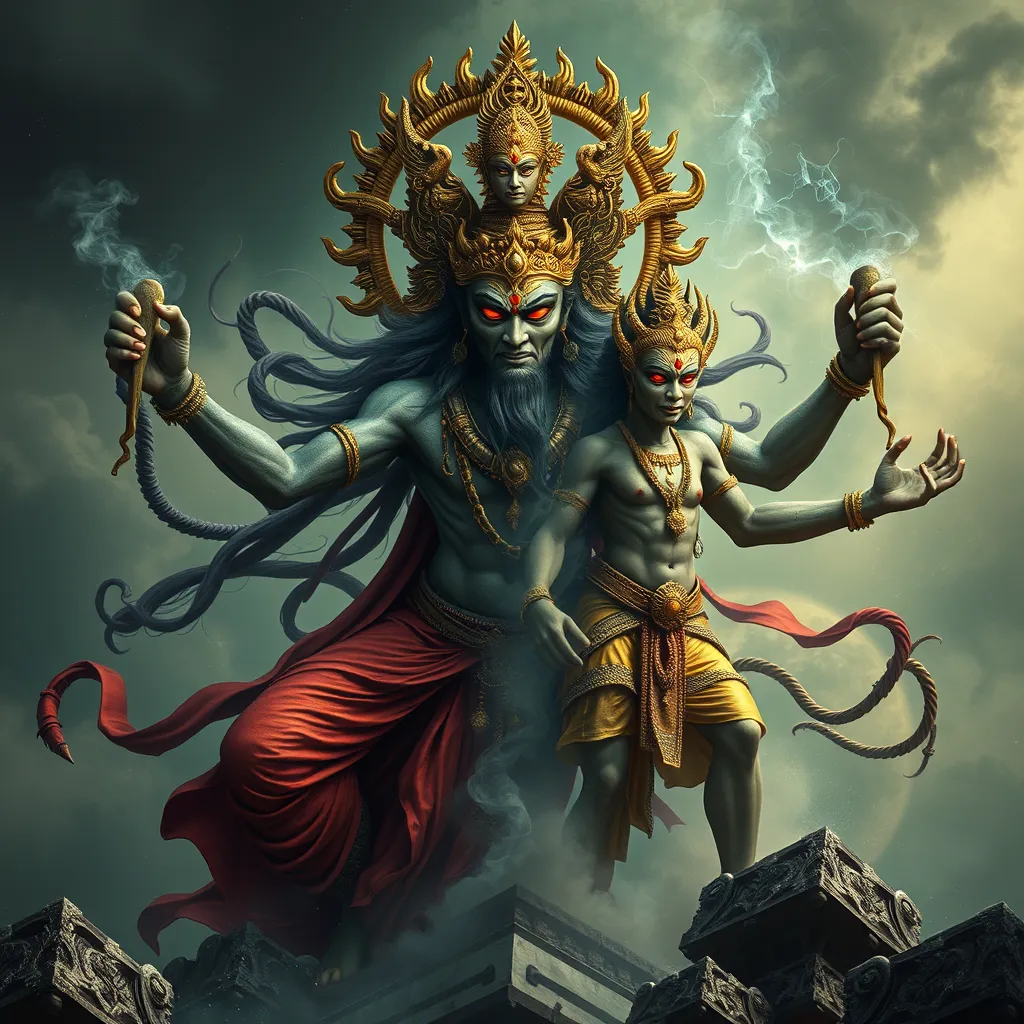The Art of Ah Puch: Depicting the God of Death in Modern Creative Expressions
I. Introduction
Ah Puch, the Mayan God of Death, holds a significant place in the pantheon of Mayan mythology. Often represented as a skeletal figure adorned with symbols of decay, he is not merely a harbinger of death but also a crucial figure in understanding the Mayan beliefs surrounding the afterlife. Ah Puch embodies the complexities of mortality and renewal, making him a compelling subject for modern artistic expression.
This article aims to explore the contemporary interpretations and representations of Ah Puch in various creative fields, highlighting how ancient mythologies continue to influence modern art, literature, and media.
II. Historical Context of Ah Puch in Mayan Culture
The Mayan civilization had a rich belief system that placed great importance on death and the afterlife. Death was not seen as an end but as a transition to another realm, which was central to their worldview.
- Significance of death in Mayan belief systems: The Mayans believed that honoring the dead and understanding the afterlife was crucial for maintaining cosmic balance.
- Traditional depictions: Ancient artifacts, such as pottery and codices, often portrayed Ah Puch alongside other deities, illustrating rituals associated with death.
- Symbolism: Ah Puch is often associated with decay, rebirth, and the cyclical nature of life, highlighting the interconnectedness of existence.
III. Modern Interpretations of Ah Puch
Today, contemporary artists draw inspiration from the rich visual history of Ah Puch, reinterpreting him through various styles and mediums.
- Artistic inspiration: Many artists look to ancient depictions, adapting traditional motifs into their work.
- Variations in styles: From surrealism to graffiti, artists utilize different techniques to portray the essence of Ah Puch, reflecting personal and cultural narratives.
- Blending aesthetics: The fusion of traditional Mayan elements with modern artistic expressions creates a dialogue between past and present.
IV. Ah Puch in Literature and Storytelling
Ah Puch’s influence extends into literature and storytelling, where themes of death and the afterlife are explored in depth.
- Modern literature: Authors incorporate Ah Puch into narratives, often using him to symbolize the inevitability of death and the mysteries of the afterlife.
- Themes explored: Stories often delve into the emotional and philosophical aspects of death, examining how it shapes human experiences.
- Notable works: Examples of literature featuring Ah Puch include novels and short stories that reimagine his role in contemporary settings.
V. Ah Puch in Film and Animation
The character of Ah Puch has also made appearances in film and animation, providing a visual interpretation that resonates with audiences.
- Analysis of films: Various films incorporate Ah Puch, portraying him as both a menacing figure and a misunderstood deity.
- Impact of visual storytelling: The representation of Ah Puch in film influences how viewers perceive death and cultural narratives.
- Animation: Animated works often use Ah Puch to explore complex themes, allowing for creative interpretations that engage younger audiences.
VI. The Role of Digital Art and Social Media
With the advent of technology, digital artists are finding new ways to depict Ah Puch, reshaping his image in the digital realm.
- Reimagining through technology: Digital platforms allow artists to create and share vibrant interpretations of Ah Puch, reaching wider audiences than ever before.
- Influence of social media: Online communities facilitate discussions around artistic interpretations, fostering a space for dialogue and critique.
- Community interactions: Artists and fans engage with modern depictions of Ah Puch, creating a collaborative environment that honors the character’s legacy.
VII. Cultural Appropriation vs. Cultural Appreciation
The representation of Ah Puch in modern art raises important questions about cultural appropriation and appreciation.
- Understanding the distinction: It is crucial to differentiate between appropriating cultural symbols without context and appreciating them through respectful engagement.
- Perspectives from Indigenous artists: Many Indigenous creators emphasize the importance of respectful representation and the need for cultural sensitivity in artistic endeavors.
- Importance of context: Contextualizing the depiction of figures like Ah Puch is essential to honor their cultural significance and history.
VIII. Conclusion
In summary, the exploration of Ah Puch in modern creative expressions reveals the enduring relevance of this Mayan God of Death. Through various artistic mediums, contemporary artists and storytellers reinterpret his legacy, offering fresh perspectives on themes of mortality and the afterlife.
As society continues to grapple with the concepts of death and rebirth, Ah Puch remains a powerful symbol within cultural dialogues. It is essential to approach these representations with respect and understanding, honoring the rich heritage from which they arise.
Ultimately, the art of Ah Puch serves as a reminder of the intricate relationship between culture, mythology, and contemporary expression, highlighting the importance of preserving and celebrating the legacies of our ancestors.



